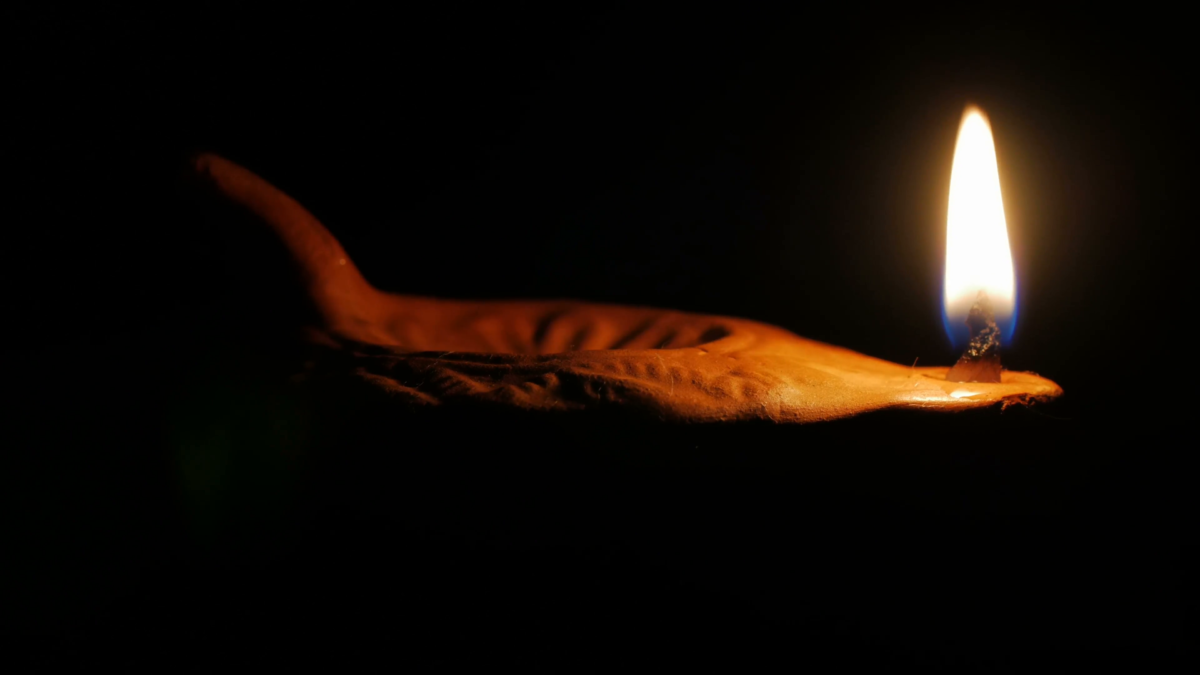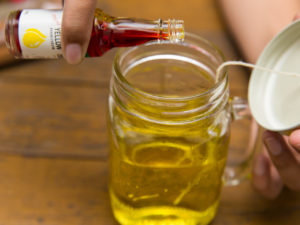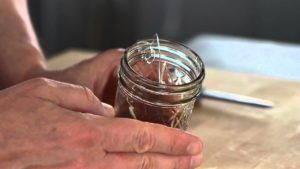
Daylight’s boring. But when the darkness comes crawling, that’s when things start to get interesting. As a person who lives in a city where blackouts are more common than acne on a teen’s face, I can state for the fact that there’s no such thing as doing too much research on alternative ways of getting light back into the home.
One of the tricks would be to melt bacon and use the resulting grease to make emergency candles (be sure to check out my article if you haven’t done so already). However, apart from the fact that your home will smell like a slaughterhouse, those things tend to attract a lot of unwanted attention – I was referring to flies and mosquitos, of course.
Well, if you don’t want to spend any of that precious and yummy-yum-yum bacon, I have just the thing for you – a good, old lantern which runs on vegetable oil. Seems like a prepper’s dream come true, doesn’t it? Believe it or not, anyone can whip up one of these beauties regardless of how weak their DIY game is. So, without further ado, here’s how you can build your own oil lamp.
Mustering up the materials and ingredients
For this project, you’re going to need a couple of items. Don’t worry about spending too much moolah; the chances are that you already have all the items on the list. So, head to your garage, cellar or pantry and grab the following items:
- One cork (if you don’t have spare ones, you can always salvage one from a wine bottle, after drinking it, of course).
- A mason jar (if you don’t have one to spare, you can always use a small bowl).
- Pair of scissors.
- A sharp knife.
- A hammer and a couple of nails.
- Lamp wick (in case you don’t have any wicks, you can replace with a piece of cloth. Make sure that it’s 100% cotton. Otherwise, it won’t burn.
- Olive oil (you can also use sunflower seed or any type of veggie oil you have around the house).
- One glass of tap water.
Are you done gathering the ingredients and materials? Splendid! Here’s what you will need to do in order to construct your first oil lamp.
DIY Oil Lantern
Step 1. Drink wine, throw away the bottle, and salvage the cork.
Step 2. Grab your knife and cut a small cork piece. Make sure that the bottom is flat. Otherwise, the cork piece will tumble, and out goes the flame (it should be at least two inches in length).
Step 3. It’s now time to mount the wick. Using your hammer and a small nail, find the center of the cork piece and make a hole. Keep in mind that the nail has to go all the way through. You may need to do this a couple of time to ensure that the hole is wide enough. When you’re done, draw the wick through the hole.
Yes, I know it’s frustrating to try and get that wick through that tiny hole. However, when you feel like giving everything up for Lent, grab a needle and use it to draw the wick. It’s super simple, and it works.
Step 4. Once you’re done with the wick, use a pair of scissors to cut the excess string from one side of the cork. When I got around to trying out this project, I left out one and a half inches of string (yes, you can also use plain cotton string if you don’t have anything else at your disposal).
Step 5. Put the cork and wick inside the mason jar. Remember that the long part has to stay inside the jar, while the shorter one must remain above the surface at all times.
Step 6. Time to add some fuel to your DIY lamp. Fill the mason with your veggie oil of choice. Make sure you pour the oil from the sides to avoid the wick (it will still burn, but the smoke itself will drive everyone out of the room).
Step 7. Use a lighter or match to set fire to the wick and enjoy!
More thoughts on homemade oil lamps
Although this kind of DIY oil lamp can be made with just any kind of veggie oil, I would advise you to use olive oil. Yes, I know that you want to save that for your Caesar salad, but the truth of the matter is that compared to other types of oils, the olive variety doesn’t smell that bad when you set it on fire. And don’t worry about using too much of that stuff – for a six-hour candle, I used half a bottle of olive oil.
Now, if you want to make your oil lamp last longer, you can try mixing the oil with some water. That will give you another hour or two, at best. Moreover, this would be a good call if you don’t have that much oil to spare. There’s another trick you can use to add another couple of hours to your oil lantern.
Before placing the wick inside the cork piece, fill a bowl with apple cider vinegar, and let the wick soak for a couple of minutes. Take it out and allow it to dry. You can use it after that to create your oil lamp. This very simple procedure gives you an extra four hours of light.
You’re probably wondering how to carry that thing around the house. Well, if your mason jar comes with a handle, it should be no problem taking the oil lamp to another area of the house. If it doesn’t, just put the jar on a plate or something. I would advise you to keep your DIY lamp on a wooden board when you’re using it. Apart from the fact that it has a rustic appeal to it, the support will also prevent the jar from leaving a scorch mark.
Hope you’ve enjoyed my article on making an oil lamp. Any thoughts on this project? Head to the comments section and let me know.
Other self-sufficiency and preparedness solutions recommended for you:
The Lost Ways (The vital self-sufficiency lessons our great grand-fathers left us)
Survival MD (Knowledge to survive any medical crisis situation)
Backyard Liberty (Liberal’s hidden agenda: more than just your guns…)
Alive After the Fall (Build yourself the only unlimited water source you’ll ever need)
The Lost ways II (4 Important Forgotten Skills used by our Ancestors that can help you in any crisis)
The Patriot Privacy Kit (Secure your privacy in just 10 simple steps)
























